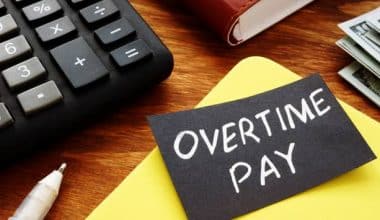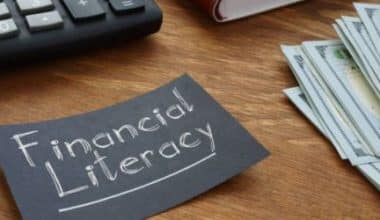Purchasing a new car can be a daunting task. And in today’s market, when supply chain disruptions and a scarcity of semiconductor chips have resulted in inventory shortages and escalating prices, finding the car you want can be even more challenging. If you need a car right away, buying a used car may provide you with additional possibilities.
Even in today’s market, there are some tried-and-true procedures you can take to make the car-buying process smoother, such as deciding how much you can afford to spend. Here is a guide on the best way to buy a car right now.
Best Way To Buy a New or Used Car
#1. Make a budget.
Begin by determining if you want to pay cash, get a loan, or lease your new car.
Paying in cash simplifies budgeting, but don’t blow all of your resources. Remember to factor in sales tax, registration, and insurance costs.
Taking out a vehicle loan is the most frequent option, but do your homework ahead of time to ensure you receive the best deal throughout the bargaining process. To determine the best monthly payment for you, use a car payment calculator.
Check your credit score as well. Consider waiting until your credit score allows you to receive suitable financing arrangements if you need to build your credit. Apply to get preapproved for an auto loan if your credit score appears to be good. Take the loan if the dealer can beat the rate and terms — but give them something to beat.
Finally, choose the best interest rate and the shortest loan term you can afford.
#2. Determine the must-have features for your car.
Now comes the fun part: choosing the ideal car for you to buy. Here are some questions you should ask yourself:
What are your plans for your car? If you have a family, for example, you’ll need enough space for everyone as well as plenty of cargo capacity.
What characteristics do you consider essential? Perhaps you’d like a sunroof, heated seats, or a remote start. Make a note of it in your search. If safety is a high consideration, look for crash test ratings from the Insurance Institute for Highway Safety.
After you’ve determined your requirements, look for models that meet them. Many car-buying websites and apps include a car finder feature to assist you in identifying great possibilities, as well as in-depth rankings and research tips. Filter your results based on your budget and desired characteristics. Choose three to five target models to investigate further.
#3. Examine dependability and ownership expenses.
It is critical to select models that are not only dependable but also have a reasonable cost of ownership. J.D. Power and Consumer records (which need a paid membership) may be useful resources; they gather owner maintenance records and score cars for dependability.
Check the total cost of ownership for each model when researching. Some cars are inexpensive to purchase but will cost a lot more in the long term due to insurance, upkeep, repairs, and depreciation. Estimate these costs using resources like Kelley Blue Book’s Five-Year Cost to Own or Consumer Reports’ Cost of Vehicle Ownership. It is often better to pay more for a car upfront than to risk excessive maintenance bills later on.
#4. Take the car for a spin.
It’s now time to witness your selections in action. It’s critical to test drive all of the automobiles you’re considering so you can get a feel for the various types. You should do this in quick succession so that your impressions are fresh in your mind for comparison.
Set up a morning or afternoon for the process, preferably in the middle of the week when dealerships aren’t too busy. Call ahead to make an appointment. That way, the appropriate model will be ready to go.
Choose a test-drive route that includes a mix of hills, bumpy pavement, curves, and even a stretch of highway.
Because of the new-car shortage, it may be difficult to find what you’re looking for on the lot. You can browse dealership inventory online or by using an app or website that allows you to search many dealerships at the same time.
If nothing local meets your requirements, try widening your search radius by using an online car-shopping tool such as Autolist or Autotrader to cover a whole region.
#5. Find the best deal.
Pricing guides like Kelley Blue Book and Edmunds cut to the chase and tell you exactly what other people in your region are paying for the car you want. Input the car options you wish to see costs on either company’s website. It should be noted that aspects such as color, for example, can influence a car’s price.
Also, check to see if any incentives or rebates are available for the car you want. Most manufacturer websites mention current promotions, which usually change once a month.
#6. Request dealer quotes
Requesting dealer estimates by email can help to reduce the stress of negotiating. You can obtain a pricing quote by emailing the dealership or by using a third-party tool like TrueCar, which allows you to seek prices from numerous dealerships at once.
Compare the asking price of the seller to the average market price indicated by the pricing guides. The vendor is almost certainly seeking more than the market average.
Here are a few tactics to utilize on the car lot if you are negotiating in person:
- Don’t make a monthly payment. You are classified as a cash buyer if you have preapproved financing. Negotiate the car’s price, not the amount of the monthly payment.
- Slowly negotiate. It’s easy to become confused, so take your time and even jot down the numbers that are hurled at you. Check to see if you’re talking about the “out-the-door” price, which includes all taxes and fees, or just the car’s purchase price.
- Before agreeing to a deal, inquire about fees. Some dealers may incorporate unneeded costs. Before you commit to any agreement, request a summary of additional fees.
- Prepare walkway. If you’re not making headway on a deal or don’t like how you’re being handled, simply walk out.
#7. Increase the value of your trade-in.
If you have a car to trade in, make sure you get the greatest deal possible. To find out how much your car is worth, use an online pricing guide’s appraisal function. Fill out everything correctly, since certain features and settings can provide extra value.
Here are some terms you may come across:
- Trade-in value: The amount you would receive if you traded in the vehicle.
- Private-party value: The amount you would get if you sold the automobile on your own.
- Dealer-retail value: The amount for which the dealer will attempt to sell the automobile.
You can also sell your car online through car-shopping websites, which will make you a quick offer for your vehicle even if you don’t buy from them. Having that as a reference point can help you negotiate better at the dealership. If the dealer refuses to match the offer, you can always go with the better one.
#8. Complete the transaction
If you’re negotiating over the phone or by email, you can request that the car be brought to you rather than picked up at the dealership. It’s simple and stress-free. It should be noted that not all dealerships provide this service, and it is customary for buyers to sign paperwork in person.
Keep the following in mind before signing the papers:
- Even if you’ve been preapproved for a loan, the finance manager at the dealership may offer to beat the conditions of the loan. It’s not a bad idea to ask if they can get you a better interest rate. Just make sure that all of the other loan terms are the same.
- The finance manager may try to offer you more items and services before the contract is finalized. Purchasing an extended car warranty at the correct price, for example, can bring peace of mind. But first, review the terms of the warranty that comes with your new car. Most new automobiles come with a bumper-to-bumper warranty that lasts at least three years and 36,000 miles, as well as a powertrain warranty that can last up to 60,000 miles. The powertrain warranty covers all of the components that make the car driveable, including the engine, transmission, and suspension.
- Take your time examining the contract and resist the urge to sign just to get it over with. The contract will include the agreed-upon sales price as well as other figures such as state sales tax, a documentation fee (paid by the dealer for filling up your contract), and registration fees.
Choose Whether You Want to Finance, Pay Cash, or Lease Your Car
It is up to you to decide how to pay for the new car you want to buy, but it is ideal to pay in cash whenever possible.
There are, however, exceptions. If you’ve already amassed some wealth, financing or leasing may be helpful if it allows you to retain cash invested while earning a better rate of return.
Car Financing
Pros
- It is more adaptable than cash. Most people don’t have the cash to put down $20,000 for a car, which is perfectly normal. Financing allows you to pay for your car gradually and with interest over time.
- It improves credit and equity. When you finance a car, you will fully own it once your loan is paid off. As a result, unlike leasing, you’ll be developing equity in an asset and increasing your net worth (albeit a declining asset). Furthermore, unlike cash payments, financing with hundreds of on-time monthly payments helps you enhance your credit score.
- Mileage is unlimited. Unlike leasing, when you finance a car, you are not bound by dealer restrictions. You can drive as many miles as you like, make modifications to your car, and let your dog scratch up the back seat.
Cons
- You will be charged interest. A 5% APR is a good rate for a car loan, and a $15,000 loan with a 36-month term will cost you around $1,200 in interest. Without taking inflation into account, that is money you would have saved by paying cash.
- It costs more than leasing. While financing allows you to own the car outright, leasing is nearly always less expensive month to month. Furthermore, leasing will help you afford a modern car.
- You are responsible for repairs. When you finance a car, your expenses do not stop with the monthly payment; you must also consider insurance, maintenance, repairs, tires, gas, depreciation, and other factors. If you’re thinking about leasing a car that has a history of being unreliable, keep in mind that the dealership handles routine maintenance.
You should finance a car if… You don’t have the cash to buy a car outright but have a steady monthly income that allows you to make the payments. If you can get a low enough interest rate, it may make sense to finance rather than pay cash because 36-48 months of on-time car payments are a wonderful way to build credit before purchasing a house.
Using Cash
Pros
- You’ll save thousands of dollars in interest. Even with the best loan conditions, you’ll wind up spending thousands of dollars in interest if you finance a car; thousands you’ll keep if you pay cash upfront.
- There is no monthly cost. With no monthly payment, you may sleep better, save more quickly, and live debt-free (or close to it).
- It compels you to spend less money. Paying cash for a car forces you to consider what you genuinely can afford. If you can’t afford to pay cash for a car, you should either cut your spending, save for a period, or consider not getting a car at all.
Cons
- It has the potential to deplete your finances. Spending some or all of your savings on a car can leave you exposed. When considering a large purchase such as a car, make cautious not to deplete your emergency money.
- You’ll miss out on an opportunity to develop credit. Financing a car, as long as payments are made on time, can be beneficial to your credit. By paying cash for a car, you would miss out on that opportunity.
- It could be better spent on investing or debt consolidation. The cost difference between financing and paying cash for a $10,000 car is “only” around $1,000-$1,500 with favorable loan terms. As a result, financing the car and applying the $10,000 cash to your existing high-interest loan may make financial sense. You could also think about investing it.
You should buy a car in cash if… you can afford to pay a flat sum without depleting your emergency fund or having to consolidate other debt first. You will lose the credit boost that financing provides, but paying cash will save you hundreds of dollars in interest.
Car Leasing
Pros
- You are not responsible for maintenance or repairs. Most lease agreements include a manufacturer’s new car warranty as well as free checks and routine maintenance, which you would be responsible for if you paid cash or financed a car.
- It lowers the cost of driving new cars. The average new car will cost $37,000 in cash or $1,000 or more per month to finance, but only half that to lease.
- It is far more convenient. Leasing eliminates the hassle of selling your old car before upgrading. Some people like the simplicity and ease of simply bringing their car in every three years, signing a few documents, and driving away in the newest model, regardless of cost.
Cons
- In the long run, it will cost you more than financing. Leasing is less expensive month to month than financing the same car, but financing results in a sellable asset worth more than your total monthly savings.
- Every scratch greater than three inches will cost you money. When you return your rented vehicle, you must pay to fix any large nicks or scratches. A single scratch on a newer luxury car can cost more than $1,000 to fix, depending on the body panel.
- There are numerous fees and limits. When you lease a car, you are effectively renting it, and renting has many limitations. A leased car cannot be modified, and any stickers must be carefully removed so as not to damage the paint. Furthermore, most leases demand supplemental comprehensive and gap insurance, and they cannot be driven more than 12,000 miles per year without paying costs.
You should lease a car if… You definitely, unequivocally desire a new car and cannot afford to finance one month to month. It may also make sense to lease if a government incentive, such as the Clean Vehicle Rebate Program, is available.
How Much Cash Should You Have Before Buying a Car?
If possible, spend less than 10% of your take-home income on your monthly car payment and less than 15% to 20% on total car expenses. If you plan on financing a car, do your homework ahead of time. A car payment calculator can help you determine the best monthly payment for you. When you’re ready to buy a new car, aim to put down 20% of the buying price.
When Should You Buy a Car?
Normally, a car shopper would be encouraged to wait until the end of the month because that is when many dealers are attempting to meet quotas and are more willing to negotiate. They may also be instructed to hunt for automobiles that are being discontinued or redesigned because dealers want to get them off the lot as soon as possible.
When Is the Best Time of Year to Buy a Car?
Dealers usually offer discounts towards the end of the year, at the conclusion of the model year, and around holidays such as Black Friday. Purchasing a car during these times can help you save money.
Should I Trade In or Sell My Used Car?
Selling your car might occur at any point during the new car purchasing process. Do not be rushed into a trade-in since you will always get more money for your used car if you sell it yourself rather than trading it in at the dealership.
By selling it yourself, you can expect to collect 20% extra for your old car. If you prefer the ease of simply turning over the keys, you can still get a decent bargain on a trade-in.
Conclusion
Buying a car for the first time might be a scary proposition, but taking a logical, planned approach will pay off for the rest of your life.
Take your time, negotiate a fair bargain, and get a pre-purchase examination, and you’ll soon be driving out into the sunset in a car you adore at an unbelievable price.
- $500 DOWN PAYMENT CARS: How It Works
- HOW DOES LEASING A CAR WORK? Detailed Guide
- SECURE FINANCING: Definition, Principles & Best Easy Guide
- BEST WAY TO BUY A CAR Now!! 9 Practical Cost-Effective Steps in 2023
- THE TIPS FOR BUYING A USED CAR: Complete Guide & Reliable Tips






